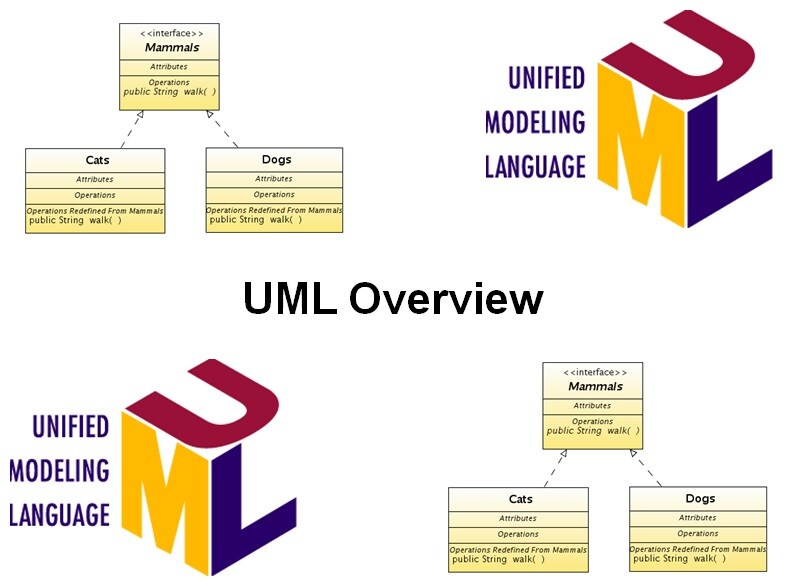-
Learning by doing
-
Trainers with practical experience
-
Classroom training
-
Detailed course material
-
Clear content description
-
Tailormade content possible
-
Training that proceeds
-
Small groups
The course UML Overview gives insight into the UML language for modeling systems. It discusses the UML syntax, symbols, diagrams and views.
After an introduction to the UML specification and the meaning of UML as a meta language, the courses addresses Structural Modeling and the diagrams used like class and object diagrams, component and deployment diagrams.
Also domain modeling and the modeling of possible relationships between classes are discussed like inheritance, associations, aggregations, compositions and dependencies.
Next attention is paid to Use Case Modeling, the Use Case Diagram, the role of actors and the accurate description of the interaction steps.
The next subject is Dynamic Behavior Modeling where interaction diagrams like sequence diagrams and collaboration diagrams are discussed.
The modeling of system states using state chart diagrams, the difference between passive and active objects and the role of threads is also part of the subject matter. There is also attention for the role of activity diagrams in which concepts such as control and data flow and swim lanes are discussed.
Finally a number of advanced concepts such as the UML modeling of packages and subsystems and the use of stereotypes, constraints and tagged values are part of the program.
The course UML Overview is intended for developers, designers, architects, managers and other interested persons who want to get an overview of the Unified Modeling Language (UML) standard for modeling systems.
Knowledge of and experience with system development and object orientation is beneficial to a good understanding but not strictly required.
The theory is treated on the basis of presentation slides and is interspersed with exercises. UML models are used as demonstration of the concepts. The course material is in English. The course times are from 9.30 up and to 16.30.
Participants receive an official certificate UML Overview after successful completion of the course.

Module 1 : UML Introduction |
Module 2 : Use Case Modeling |
Module 3 : Structural Modeling |
|
What is UML? Modeling Reasons UML History UML Design Goal UML Diagrams UML Views Use Case View Logical View Component View Deployment View Notes and Adornments Stereotypes Tagged Values Constraints System Sequence Diagrams |
Use Cases Actors System Context Diagram Identifying Use Cases Use Case Diagram Use Case Modeling Steps High Level Use Case Expanded Use Case Structuring Use Case Model Include Relationship Include Use Case Extends Relationship Extends Use Case Use Case Generalization Actor Generalization |
Structural Modeling Identification of Classes Structural Diagrams Elements Structural Relationships Association Modeling Domain Class Model Interfaces Composition Generalization Dependencies Packages Objects and Links Component Diagrams Deployment Diagrams Design Class Diagrams |
Module 4 : Interactions |
Module 5 : State Machines |
Module 6 : Activity Graphs |
|
Interaction Diagrams System Sequence Diagrams Object Sequence Diagrams UML Messages Sequence Diagrams Elements Recursion and Conditions Sequence Diagram Syntax Communication Diagrams Communication Diagram Elements Communication Diagram Syntax Interaction Diagrams are Valuable |
State Machines State Diagram Elements State Machine Usage State Entry and Exit Actions Pseudo States Order of Actions Internal Transitions State Do Activities Guards History States State Diagram Syntax |
Activity Diagram Steps in Activity Diagrams Actions and Subactivities Activity Diagram Elements Decisions Sync State Fork Transitions Join Transitions Swim Lanes Activity Diagram Syntax Using Activity Diagrams |
